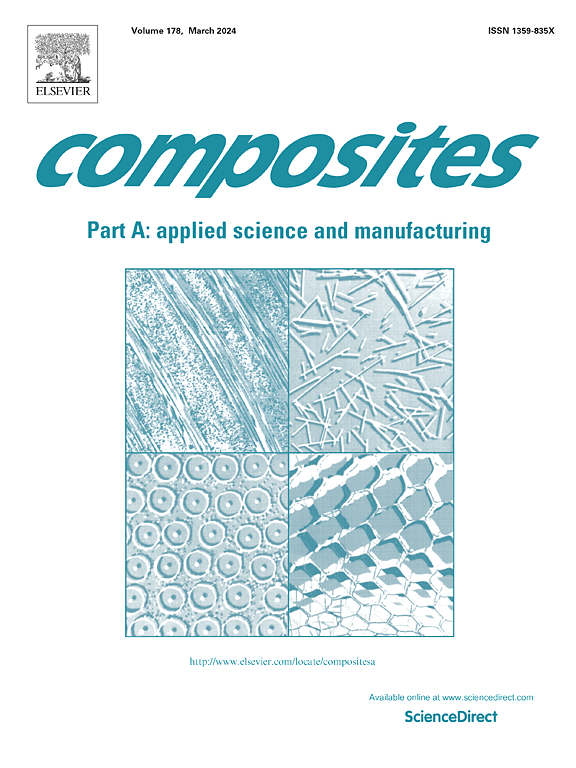Lunar regolith simulant-derived 3D-printed geopolymers with optimized mechanical and thermal management properties
IF 8.1
2区 材料科学
Q1 ENGINEERING, MANUFACTURING
Composites Part A: Applied Science and Manufacturing
Pub Date : 2025-04-29
DOI:10.1016/j.compositesa.2025.108989
引用次数: 0
Abstract
Lunar soil, as an in-situ resource, holds significant potential for constructing bases and habitats on the Moon. However, such constructions face challenges including limited mechanical strength and extreme temperature fluctuations ranging from −170 °C to +133 °C between lunar day and night. In this study, we developed a 3D-printed geopolymer derived from lunar regolith simulant with an optimized zig-zag structure, exhibiting exceptional mechanical performance and thermal stability. The designed structure achieved remarkable damage tolerance, with a compressive strength exceeding 12.6 MPa at ∼ 80 vol% porosity and a fracture strain of 3.8 %. Finite element method (FEM) simulations revealed that the triangular frame and wavy interlayers enhanced both stiffness and toughness. Additionally, by incorporating strategically placed holes and extending the thermal diffusion path, we significantly improved the thermal insulation of the structure, achieving an ultralow thermal conductivity of 0.24 W/(m K). Furthermore, an iron-free geopolymer coating reduced overheating under sunlight by 51.5 °C, underscoring the material’s potential for space applications.

模拟月球风化层的3d打印地聚合物,具有优化的机械和热管理性能
月球土壤作为一种原位资源,具有在月球上建造基地和栖息地的巨大潜力。然而,这种结构面临的挑战包括有限的机械强度和月球昼夜之间- 170°C到+133°C的极端温度波动。在这项研究中,我们开发了一种基于模拟月球风化层的3d打印地聚合物,具有优化的锯齿形结构,具有优异的机械性能和热稳定性。设计的结构具有显著的损伤容限,在孔隙率为~ 80 vol%,断裂应变为3.8%时,抗压强度超过12.6 MPa。有限元模拟结果表明,三角形框架和波浪夹层均提高了结构的刚度和韧性。此外,通过加入有策略地放置的孔和扩展热扩散路径,我们显着改善了结构的隔热性,实现了0.24 W/(m K)的超低导热系数。此外,一种不含铁的地聚合物涂层可以将阳光下的过热降低51.5°C,这凸显了该材料在空间应用方面的潜力。
本文章由计算机程序翻译,如有差异,请以英文原文为准。
求助全文
约1分钟内获得全文
求助全文
来源期刊

Composites Part A: Applied Science and Manufacturing
工程技术-材料科学:复合
CiteScore
15.20
自引率
5.70%
发文量
492
审稿时长
30 days
期刊介绍:
Composites Part A: Applied Science and Manufacturing is a comprehensive journal that publishes original research papers, review articles, case studies, short communications, and letters covering various aspects of composite materials science and technology. This includes fibrous and particulate reinforcements in polymeric, metallic, and ceramic matrices, as well as 'natural' composites like wood and biological materials. The journal addresses topics such as properties, design, and manufacture of reinforcing fibers and particles, novel architectures and concepts, multifunctional composites, advancements in fabrication and processing, manufacturing science, process modeling, experimental mechanics, microstructural characterization, interfaces, prediction and measurement of mechanical, physical, and chemical behavior, and performance in service. Additionally, articles on economic and commercial aspects, design, and case studies are welcomed. All submissions undergo rigorous peer review to ensure they contribute significantly and innovatively, maintaining high standards for content and presentation. The editorial team aims to expedite the review process for prompt publication.
 求助内容:
求助内容: 应助结果提醒方式:
应助结果提醒方式:


